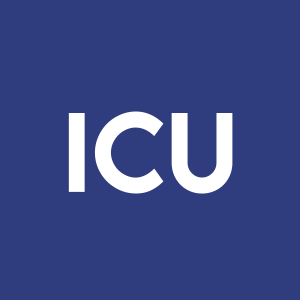SeaStar Medical Granted Canadian Patent with Broad Claims Covering the Selective Cytopheretic Device Technology
DENVER, Feb. 01, 2024 (GLOBE NEWSWIRE) -- SeaStar Medical Holding Corporation (Nasdaq: ICU), a medical device company developing proprietary solutions to reduce the consequences of hyperinflammation on vital organs, announces the issuance by the Canadian Intellectual Property Office of Canadian Patent No. 2814586. This new patent has broad claims covering the Company’s Selective Cytopheretic Device (SCD) technology. Its issuance expands SeaStar Medical’s international patent rights and complements existing U.S. patent rights.
“A significant opportunity exists to improve treatment of dysregulated hyperinflammatory response that can cause multiorgan damage and even death. The SCD is an innovative and proven approach that selectively targets highly active inflammatory cells to quell the hyperinflammatory response resulting from a range of conditions, and potentially reverse organ injury,” said Eric Schlorff, CEO of SeaStar Medical.
This newly issued Canadian patent, titled Cytopheretic Cartridge and Use Thereof, provides coverage of SCD cartridges for treating activated leukocytes and activated platelets, as well as their use in processing activated leukocytes and platelets.
About the Selective Cytopheretic Device
The novel SCD is a cell-directed therapy that uses the body’s immune system to heal and can be easily added to other extracorporeal therapies such as dialysis or continuous kidney replacement therapy (CKRT). This technology targets and neutralizes activated toxic neutrophils, providing a new therapeutic approach to systemic inflammatory response syndrome. By restoring reparative physiology, the SCD holds potential to reduce mortality. It has been used with other treatments including IL-6 blockers, corticosteroids and other common treatments, with few known contraindications.
About SeaStar Medical
SeaStar Medical is a medical technology company that is redefining how extracorporeal therapies may reduce the consequences of excessive inflammation on vital organs. SeaStar Medical’s novel technologies rely on science and innovation to provide life-saving solutions to critically ill patients. The Company is developing and commercializing cell-directed extracorporeal therapies that target the effector cells that drive systemic inflammation, causing direct tissue damage and secreting a range of pro-inflammatory cytokines that initiate and propagate imbalanced immune responses. For more information visit https://seastarmedical.com or visit us on LinkedIn or X (formerly Twitter).
Forward-Looking Statements
This press release contains certain forward-looking statements within the meaning of the “safe harbor” provisions of the Private Securities Litigation Reform Act of 1955. These forward-looking statements include, without limitation, SeaStar Medical’s expectations with respect to the ability of SCD to treat patients with AKI and other diseases. Words such as “believe,” “project,” “expect,” “anticipate,” “estimate,” “intend,” “strategy,” “future,” “opportunity,” “plan,” “may,” “should,” “will,” “would,” “will be,” “will continue,” “will likely result,” and similar expressions are intended to identify such forward-looking statements. Forward-looking statements are predictions, projections and other statements about future events that are based on current expectations and assumptions and, as a result, are subject to significant risks and uncertainties that could cause the actual results to differ materially from the expected results. Most of these factors are outside SeaStar Medical’s control and are difficult to predict. Factors that may cause actual future events to differ materially from the expected results include, but are not limited to: (i) the risk that SeaStar Medical may not be able to obtain regulatory approval of its SCD product candidates; (ii) the risk that SeaStar Medical may not be able to raise sufficient capital to fund its operations, including clinical trials; (iii) the risk that SeaStar Medical and its current and future collaborators are unable to successfully develop and commercialize its products or services, or experience significant delays in doing so, including failure to achieve approval of its products by applicable federal and state regulators, (iv) the risk that SeaStar Medical may never achieve or sustain profitability; (v) the risk that SeaStar Medical may not be able to access funding under existing agreements, including the equity line of credit and forward purchase agreements; (vi) the risk that third-parties suppliers and manufacturers are not able to fully and timely meet their obligations, (vii) the risk of product liability or regulatory lawsuits or proceedings relating to SeaStar Medical’s products and services, (viii) the risk that SeaStar Medical is unable to secure or protect its intellectual property, and (ix) other risks and uncertainties indicated from time to time in SeaStar Medical’s Annual Report on Form 10-K, including those under the “Risk Factors” section therein and in SeaStar Medical’s other filings with the SEC. The foregoing list of factors is not exhaustive. Forward-looking statements speak only as of the date they are made. Readers are cautioned not to put undue reliance on forward-looking statements, and SeaStar Medical assume no obligation and do not intend to update or revise these forward-looking statements, whether as a result of new information, future events, or otherwise.
Contact:
LHA Investor Relations
Jody Cain
(310) 691-7100
Jcain@lhai.com
# # #








